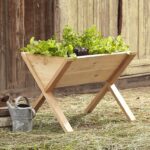Palm trees are a quintessential element of many landscapes, adding a touch of tropical elegance and exotic beauty to any outdoor space. In this article, we’ll explore the appeal of palm trees in landscape design, as well as the importance of selecting the right palm species for the local climate. If you’re looking for palm landscape ideas, you’ve come to the right place.
When it comes to choosing the right palm species for your landscape, there are several important considerations to keep in mind. From climate and soil conditions to visual appeal and maintenance requirements, finding the perfect palm tree for your outdoor space is crucial. In the following sections, we’ll cover popular palm tree species for different climates and soil conditions, as well as essential tips for creating a visually stunning and cohesive palm-centric landscape.
In addition to selecting the right palm species, designing with palm trees requires careful planning and consideration. We’ll discuss how to incorporate palm trees into your landscape design and share tips for creating a visually appealing outdoor space that showcases the beauty of these majestic trees. Whether you’re drawn to a tropical oasis or a coastal retreat, there are endless possibilities when it comes to landscaping with palm trees.
Choosing the Right Palm Species
Palm trees are a popular choice for landscaping due to their exotic and tropical appeal. However, it is crucial to choose the right palm species that can thrive in your local climate. When selecting palm trees for your landscape, it’s important to consider factors such as temperature, soil conditions, and sunlight exposure.
One of the most important considerations when choosing the right palm species for your landscape is the climate of your area. Different palm trees thrive in different climate conditions, so it’s crucial to select a species that can withstand the temperatures and weather patterns in your region.
For example, cold-hardy palm species like the Windmill Palm or European Fan Palm are ideal for landscapes in colder climates, while tropical varieties such as the Coconut Palm or Queen Palm are better suited for warmer regions.
Another factor to consider when choosing the right palm species is the soil conditions in your landscape. Some palm trees prefer well-draining sandy soils, while others thrive in more moist or clay-like soils. Understanding the soil composition of your landscape will help you select a palm species that can adapt and flourish in that specific environment.
It’s also essential to take into account the amount of sunlight exposure in your landscape when choosing a palm species. While some palms prefer full sun, others can tolerate partial shade. By considering these factors and selecting the right palm species for your local climate, soil conditions, and sunlight exposure, you can ensure a successful and thriving palm-centric landscape design.
| Climate | Ideal Palm Species |
|---|---|
| Colder Climates | Windmill Palm, European Fan Palm |
| Warmer Regions | Coconut Palm, Queen Palm |
Designing With Palm Trees
Incorporating Palm Trees Into Your Landscape Design
When designing with palm trees, it is important to consider the overall layout and aesthetic of your landscape. Palm trees can serve as striking focal points or as complementary elements to other plants and features. They can be used to create a tropical oasis, add a touch of exotic elegance, or enhance the natural beauty of a coastal environment. Whether you are going for a formal look, a casual feel, or something in between, palm trees offer flexibility in design.
Tips for Creating a Cohesive and Visually Appealing Palm-Centric Landscape
One key aspect of designing with palm trees is creating cohesion within the landscape. This can be achieved by carefully selecting palm species that complement each other and harmonize with the existing vegetation. Additionally, paying attention to the scale and proportion of palm trees in relation to other elements in the landscape is crucial for achieving visual balance. Consider the texture, color, and form of different palm species when incorporating them into your design.
Adding Personal Touches and Unique Features
To make your palm-centric landscape stand out, consider incorporating unique features that highlight the beauty of palm trees. This could include using lighting to illuminate palms at night, adding water features such as fountains or ponds surrounded by palms, or creating seating areas nestled among palms for a tranquil retreat. Thoughtful touches like these can enhance the overall appeal of your landscape and create an inviting outdoor space for relaxation and enjoyment.
Incorporating these suggestions while keeping in mind local climate considerations will help ensure a successful integration of palm trees into your landscape design, ultimately creating an appealing outdoor space for you and your visitors to enjoy.
Maintenance and Care
Palm trees can be a stunning and iconic addition to any landscape design, but it is important to remember that they require proper maintenance and care to thrive. One of the most crucial considerations when it comes to palm tree care is selecting the right species for your local climate.
Before incorporating palm trees into your landscape, it’s essential to research and understand which species will be best suited for your specific environment. Factors such as temperature, soil conditions, and sunlight exposure all play a role in determining which palm species will flourish in your area.
Once you have chosen the appropriate palm trees for your landscape, it’s important to establish a regular maintenance routine. This may include tasks such as watering, fertilizing, and pruning. The frequency of these maintenance activities will depend on the specific needs of the palm species you have selected. For example, some palms may require more frequent watering or special fertilizer formulations.
In addition to routine maintenance tasks, it is also essential to be proactive in protecting palm trees from common diseases and pests. Regular inspections for signs of infestation or disease can help prevent issues from spreading and causing irreversible damage to your palm trees. By staying diligent and informed about potential threats, you can ensure that your palm trees remain healthy and vibrant in your landscape.
| Maintenance Tasks | Pest Control |
|---|---|
| Watering | Regular inspections for signs of infestation |
| Fertilizing | Prevent issues from spreading by regular inspection |
| Pruning | Diligent and informed about potential threats |
Palm Tree Placement
When it comes to palm tree placement in your landscape, there are several important factors to consider that will contribute to the visual and functional success of your design. Here are some key considerations for determining the best location for palm trees in your outdoor space:
- Climate: Different palm species have different climate requirements, so it’s crucial to choose a species that is well-suited to the local climate in which you live. Consider whether the palm tree you have in mind can thrive in the temperature and humidity levels of your region.
- Sunlight: Palm trees generally require full sun for optimal growth, so it’s important to place them in areas where they will receive plenty of direct sunlight throughout the day. Avoid planting them in shaded locations where they may struggle to thrive.
- Space: Consider the ultimate size of the palm tree when choosing its placement. Some species can grow quite tall and wide, so make sure there is ample space for their mature size without crowding other plants or structures.
To maximize the visual impact of palm trees in your landscape design, consider how they can be incorporated into the overall layout of your outdoor space. Here are some tips for creating a visually appealing palm-centric landscape:
- Focal Points: Use palm trees as focal points or anchor plants within your design to draw attention and create visual interest.
- Grouping: Plant multiple palm trees together in clusters or groupings to create a dramatic effect and make a bold statement within your landscape.
- Contrast: Pair palms with complementary plantings that offer contrasting textures, colors, and forms to create a cohesive and dynamic look.
By carefully considering these factors and incorporating these tips into your landscape design, you can ensure that your palm trees not only thrive but also contribute to a stunning and visually engaging outdoor environment. Whether you live in a tropical, desert, coastal, or any other type of climate, there are endless possibilities for creating a unique and beautiful landscape with palm trees.
Landscaping With Palm Trees
Designing a Tropical Oasis
Palm trees are synonymous with tropical landscapes, and for good reason. Their tall, swaying fronds and unique trunk shapes instantly evoke feelings of being in a lush, exotic paradise. When designing a tropical oasis with palm trees, consider creating layers of greenery by mixing different varieties of palm trees with other tropical plants like ferns, orchids, and bromeliads. This creates a more natural and diverse look that mimics the rich biodiversity found in tropical regions.
Creating a Desert Escape
For those living in arid or desert climates, palm trees can still play a major role in landscape design. The iconic silhouette of a palm tree against the backdrop of desert terrain is a striking visual contrast. To create a desert escape with palm trees, consider using species like the Mexican Fan Palm or the California Fan Palm which are well-adapted to dry conditions. Pair them with cacti, succulents, and drought-tolerant shrubs to complete the desert aesthetic.
Enhancing Coastal Vibes
If you live near the coast, palm trees can complement your landscape design by enhancing the coastal vibes of your outdoor space. Tall and stately palms like the Coconut Palm or the Date Palm can line pathways or frame ocean views to create a sense of tranquility and relaxation. Mixing in beach grasses, seashells, and driftwood further reinforces the coastal theme while also adding texture and interest to the overall design.
By incorporating these ideas into your own landscaping project, you can create a visually stunning outdoor space that reflects your personal style while also taking advantage of all the beauty that palm trees have to offer. Whether you’re going for a lush tropical feel, an arid desert landscape, or a serene coastal retreat, palm trees provide endless possibilities for creating unique and captivating outdoor environments.
Benefits of Palm Trees in Landscaping
Palm trees are a popular choice for landscaping due to their ability to create a tropical and exotic atmosphere in any outdoor space. When selecting the right palm species for your landscape, it is crucial to consider the local climate to ensure the trees thrive in their environment. With careful consideration and planning, palm trees can offer several benefits that enhance the overall appeal of your landscape.
Here are some key advantages of incorporating palm trees into your landscaping design:
- Visual Appeal: Palm trees instantly add a sense of luxury and relaxation to any outdoor space. Their unique shapes and varying heights can create an eye-catching focal point or provide a stunning backdrop for other plants and features in your landscape.
- Shade and Privacy: Taller palm species can offer shade from the sun, making them ideal for creating comfortable outdoor seating areas. Additionally, their dense foliage can act as a natural privacy screen, allowing you to enjoy your outdoor space without feeling exposed.
- Environmental Benefits: Palm trees contribute to improved air quality by absorbing carbon dioxide and producing oxygen. They also provide habitat for wildlife, such as birds and insects, adding biodiversity to your landscape.
Incorporating palm trees into your landscaping design requires thoughtful planning and placement. By carefully considering the benefits they offer, you can create a visually striking and environmentally friendly outdoor oasis that enhances the overall beauty of your property.
Conclusion
In conclusion, palm trees have become a popular and appealing choice for landscape design due to their tropical charm and ability to thrive in various climates. As emphasized throughout this article, the key to successful palm landscaping lies in choosing the right species for your local climate and soil conditions. By considering factors such as sunlight, water, and space, you can ensure that your palm trees will flourish and make a stunning addition to your outdoor space.
Designing with palm trees requires careful planning and consideration of how they will fit into the overall landscape. Whether it’s creating a focal point, adding texture, or framing a view, there are numerous ways to incorporate palm trees into your design to achieve a cohesive and visually appealing look. And with proper maintenance and care, including protection from common diseases and pests, your palm trees can thrive for years to come.
As you explore the possibilities of palm landscape ideas for your own outdoor space, keep in mind the many benefits that palm trees bring to landscaping – not only do they provide environmental and economic advantages, but they also enhance the overall beauty of a landscape. So don’t be afraid to get creative and experiment with different ways of incorporating palm trees into your design.
With the right approach, you can create a unique and stunning palm tree landscape that adds value and appeal to your outdoor oasis.
Frequently Asked Questions
What Plants Grow Well With Palms?
Palms can thrive well when grown alongside other tropical or subtropical plants that require similar growing conditions. Some suitable companion plants for palms include hibiscus, bird-of-paradise, ferns, elephant ears, and crotons. These plants can complement the aesthetics of palm trees and create a lush, tropical landscape.
Are Palm Trees Good for Your Yard?
Palm trees can be a great addition to yards in certain climates. They offer a striking and iconic look, adding a touch of exoticism to the landscape.
In warm and sunny regions, such as Florida or Southern California, palm trees can thrive and enhance the overall appeal of the yard. However, in colder climates, they may require more care and protection during winter months.
Do Palms Like Sun or Shade?
Most palms prefer to bask in full sun to partial shade. They typically thrive in areas with plenty of sunlight, as it helps facilitate their growth and development.
However, there are some varieties of palms that are more tolerant of shade than others. It’s important to choose the right type of palm for the specific light conditions in your yard to ensure their optimal growth and health.

Welcome to my gardening blog! I am passionate about plants and enjoy sharing my knowledge and experiences with others. In this blog, I will write about everything related to gardening, from tips on how to get started to updates on my own garden projects.





